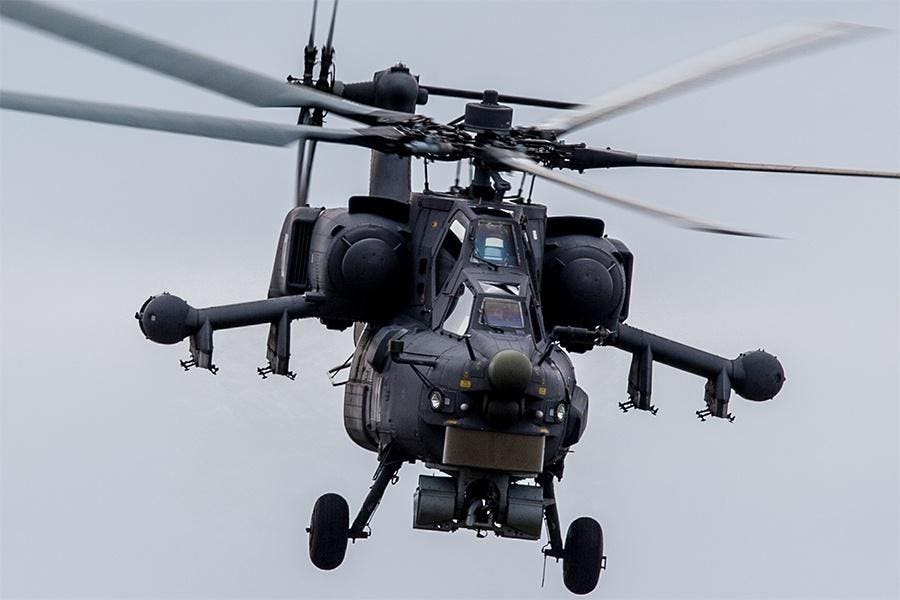The first hint the general public got that Ukrainian forces might use drones to target Russian helicopters in mid-air came just this week.
A video that circulated online on Wednesday depicts a Ukrainian first-person-view drone—presumably laden with explosives—trying to run into a Russian air force Kamov Ka-52 attack helicopter in mid-air, and narrowly missing.
But it seems Russian air force commanders knew they might have a drone problem—and even had a plan to solve it. Late last month, according to several Ukrainian media outlets and Russian social-media channels, the air force decided to organize a new unit with older Mil Mi-28 attack helicopters, and deploy it specifically for shooting down drones.
“New units on Mi-28N helicopters are being deployed in several regions of the country at once,” Telegram channel Military Informer noted. “Their crews are undergoing special training on intercepting drones at different times of the day and in different weather conditions.”
It makes sense, in principle. A 200-mile-per-hour helicopter might fly fast enough to catch up to and outmaneuver a 40-mile-per-hour drone, but not so fast that it can’t target the drone. Many attack helicopters have excellent day-night optics and stabilized autocannons that could, in theory, work against a flimsy drone.
The Russian air force seems to be prioritizing rotary-wing patrols against long-range drones targeting Russian cities. But the service also could assign the two-person, 12-ton Mi-28s to escort the two-person, 12-ton Kamov Ka-52s that are the air force’s front-line gunships.
Mi-28s and Ka-52s already sometimes fly in mixed formations, as Ka-52s have countermeasures against laser- and infrared-guided munitions such as Ukraine’s Stinger man-portable missiles, while Mi-28Ns have countermeasures against radar-guided missiles.
A close anti-drone escort would be most beneficial as a Ka-52 is hovering—for tens of seconds at a time—in order to guide its laser-beam-riding Vikhr anti-tank missiles.
Ukrainian air-defenders have made short work of hovering Ka-52s, shooting down more than 40 of them—that’s a third of the fleet—in the 19 months of Russia’s wider war on Ukraine. That the Ukrainians also now are aiming their one-way FPV drones at the Kamovs only compounds the danger to Russian crews.
Don’t count on the Mi-28s to save the Ka-52s from Ukrainian drones. We already have seen at least one video of a Mil crew chasing a drone—and failing to shoot it down.
One problem is the Mi-28’s 2A42 30-millimeter autocannon. On paper, it’s a fearsome weapon, firing at a rate of up to 900 rounds per minute. In practice, it isn’t well-integrated on the Mi-28—sitting so far forward under the helicopter’s nose, and so far from the rotorcraft’s center of gravity, that it reportedly causes a lot of vibration while firing. All that shaking makes it inaccurate.
And while the Mi-28 can carry infrared-guided air-to-air missiles, don’t expect Russian crews to fire a lot of missiles at drones. A two-pound DJI Mavic 3 FPV drone doesn’t generate a lot of heat for a missile to home in on.
Read the full article here





